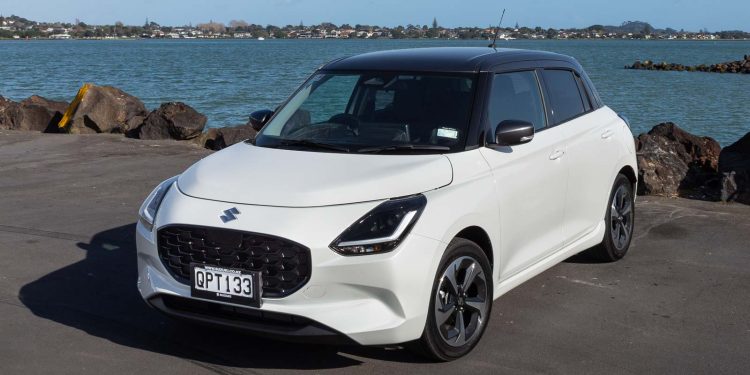2024 Suzuki Swift RSC review
Words/Photos: Kyle Cassidy
The new Swift line-up is one with far fewer variants than those of previous generations. Just two in fact, differing in spec alone.
With tightening emissions legislation around the world, even brands like Suzuki need to work hard to meet upcoming targets.
Though NZ’s CO2 goals have been loosened, they will get tougher in time. And so for the Suzuki Swift, just one electrified engine is offered this time, the little 1.2 triple boosted by a 48v mild hybrid system.
This one is of the belt-driven, integrated starter generator type.
Think of it as an ancillary hanging off the end of the engine but, unlike others that put a drag on operations, this one helps boost low-rev performance. It also takes care of the idle/stop restarts and replaces the alternator.
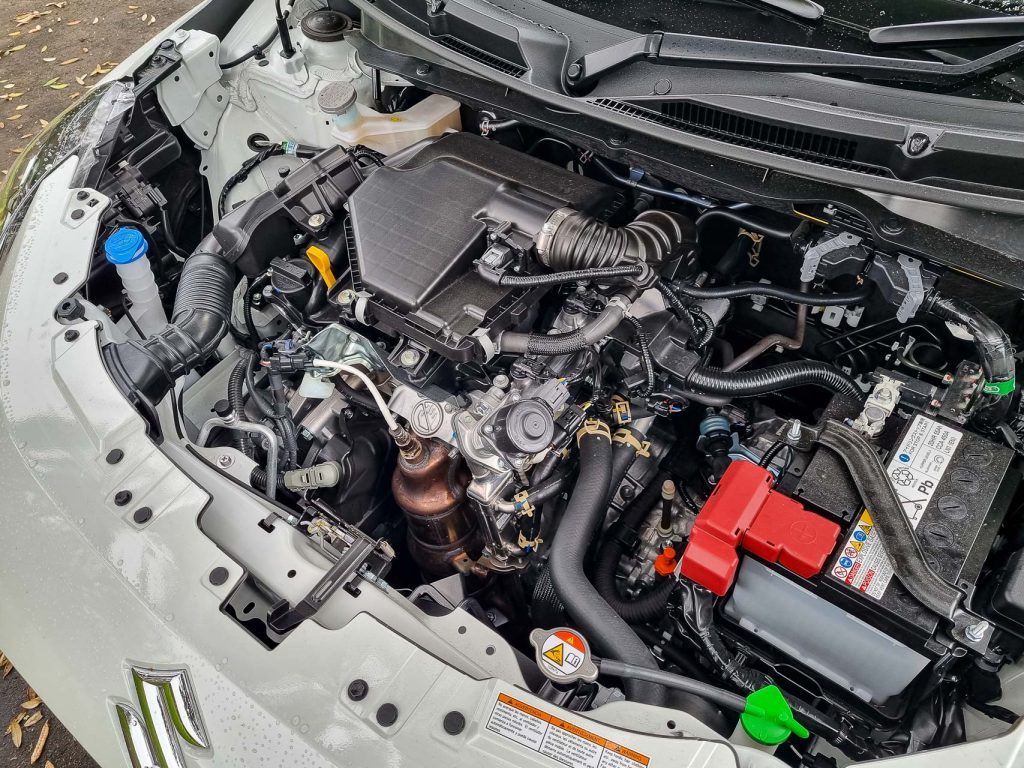
The upshot is a reduction in emissions and a lowering of overall fuel consumption.
And so there is no more Booster Jet-powered Swift, that little charmer with its 82kW/160Nm 1.0 litre turbo gone (except it hasn’t quite, Suzuki NZ still with stocks of the third-gen Swift to move) and it’s looking unlikely we’ll see another Swift Sport either. Oh well, it was good while it lasted.
The new-gen Swift starts at a still affordable $25,990 as the GLS manual, the CVT auto adding $2k. And for a further $2k, you can opt for this RSC auto.
The difference is all spec-related, the RSC with more bits like additional charge ports, climate air with fancier controls, a leather-bound wheel, heated seats with additional adjustment, privacy glass, blind spot monitoring and rear cross traffic alert, and 16-inch alloys. It even has more speakers for the sound system.
The new 1.2-litre triple makes 60.9kW and 111.8Nm (every unit and part thereof precious it seems) and rated at 4.3L/100km, while requiring 95 octane. The third-generation model’s numbers were 61kW, 107Nm and 4.7L/100km.
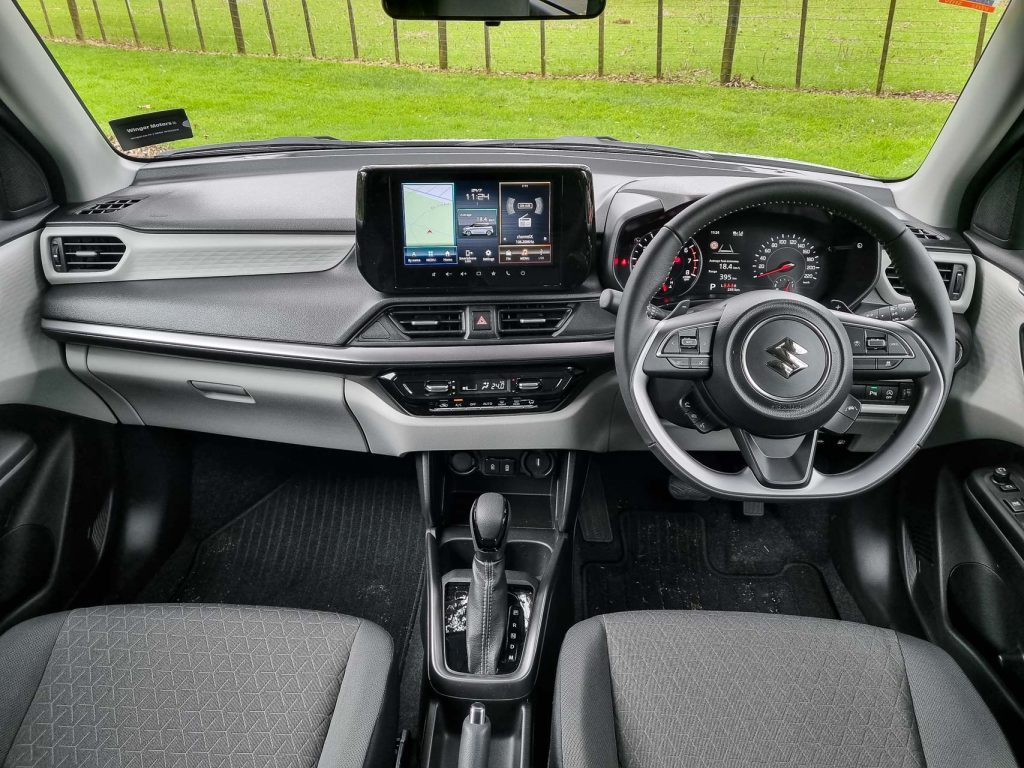
We didn’t quite replicate the claim, our test average of 5.4L/100km slightly worse than the long term average of 5.2, with over 560km of range showing from full.
While the engine’s output is modest, so too is the RSC’s mass at a stated 984kg. Still, a few thousand revs are required to get into the traffic flow, but once at speed, you can back off, the engine ticking along happily at just over 1000rpm.
Here, from basement revs, is where the boost from the 48-volt motor helps ease the load. This hybrid can’t do any ‘all electric’ running, not even at car park speeds, but the 48v system means quicker, more seamless restarts away from stopped.
The progress is smooth enough too, the twin power sources blending well. The CVT auto’s main concern is settling the engine down to operate with minimal revolutions.
However, it is also responsive at an urban gait, ‘kicking down’ quickly to access extra revs when needed.
Swift works best in urban environs, its small dimensions and light steering make it easy to manage. The ride is okay, so too the outward vision. As progress gets busier on highways, the road noise rises.
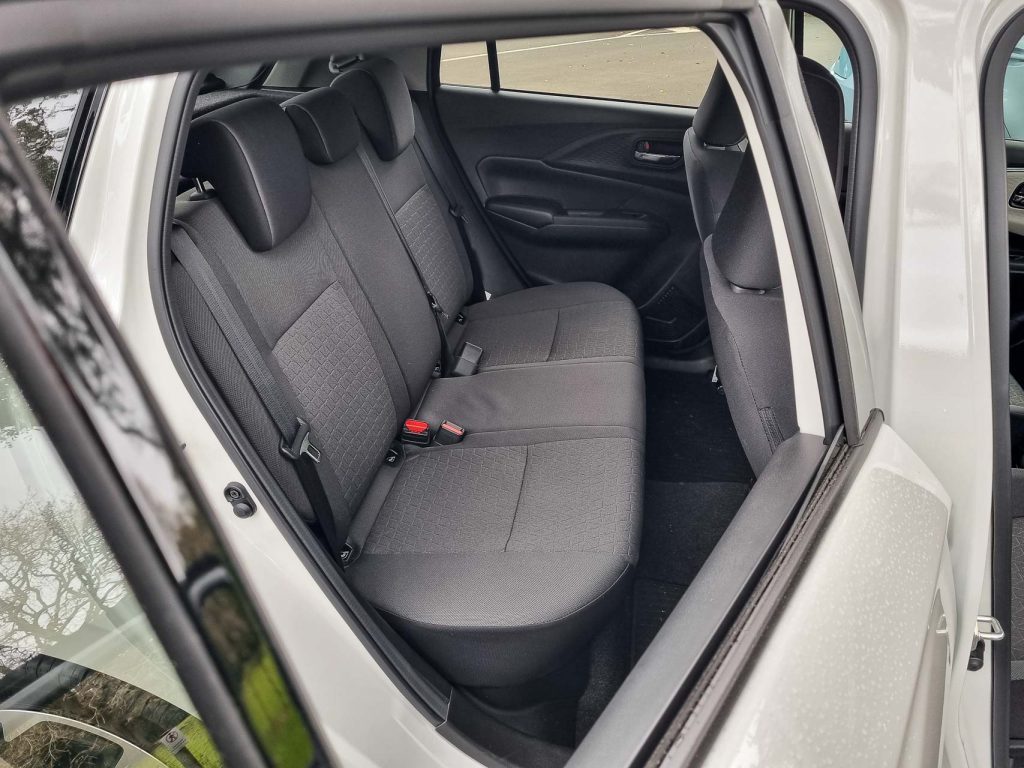
Swift is still a handy cornering machine, rounding them up in enjoyable fashion. Out here is about the only time you might use the shift paddles, helping keep the CVT in its higher operating band to egg the engine on.
Cabin access is easy, the seat comfortable and well formed. While the decor is one of hard plastic, the two-tone scheme with its textured surfaces lifts the ambience.
It’s a straightforward machine this, a lever for both the handbrake and gear selection, switches for the A/C, analogue dials and buttons for all the main features. The screen takes a moment to respond to each touch but has a straightforward operation, Suzuki keeping it simple here.
Swift is still small, so space in the rear remains cosy for adults whose knees will be in contact with the backs of the front seats (where there aren’t any pockets).
There are no plastic caps on the seat belt anchor bolts either, manufacturers cutting costs wherever they can these days. There is however a proper three-point belt for the middle pew and Isofix points too.
Boot space is okay for the class, being deep (no spare tyre though). While there is split folding, the seats don’t fold flat. Some of the finishing back here has a cost-conscious vibe to it as well.
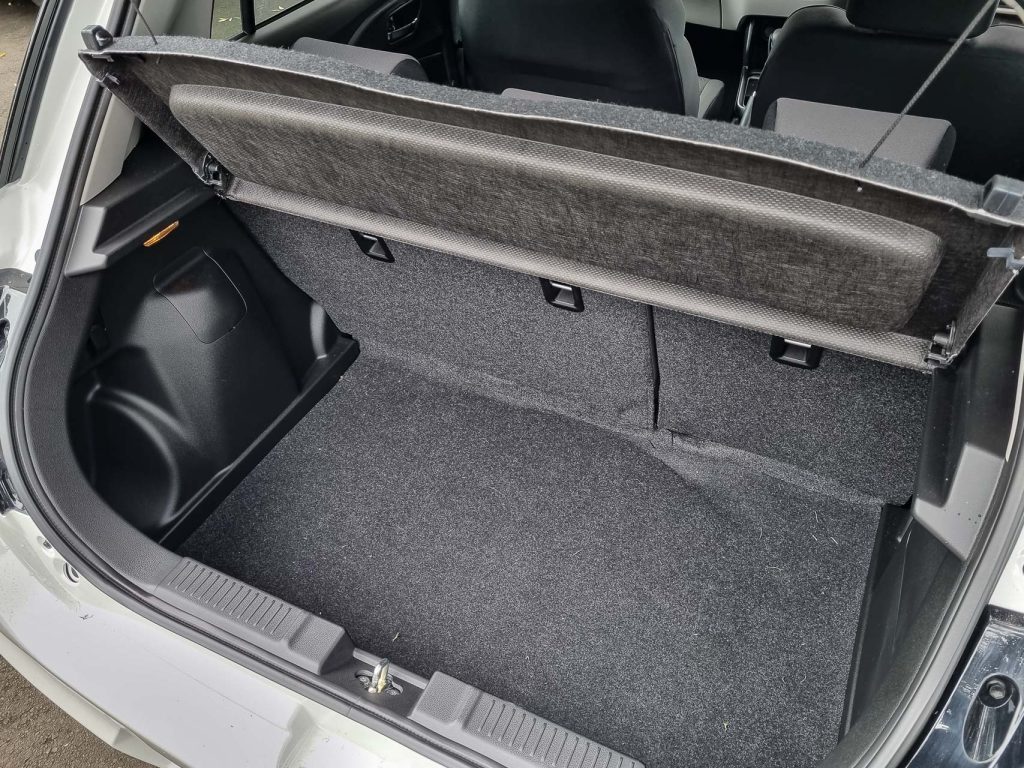
There are more safety features this time, no driver monitor thankfully, nor any persistent speed alerts.
Speed sign recognition is present so you know how fast you should be going, the active cruise now has stop and go functionality and if you don’t like the lane keeping, there’s a button in easy reach to neutralise it.
So Swift is still much the same, a good keen machine, with an eye on economy and still at an affordable price (at least by 2024 standards).
| Model | Suzuki Swift RSC |
| Price | $29,900 |
| Engine | 1197cc, IL3 |
| Power | 60.9kW @ 5700rpm |
| Torque | 111.8Nm @ 4500rpm |
| Drivetrain | CVT, FWD |
| 0-100 km/h | 10.87s |
| Fuel Use | 4.3L/100km |
| C02 Output | 97g/km |
| Weight | 984kg (claimed) |
This article first appeared in the October 2024 issue of NZ Autocar Magazine.


